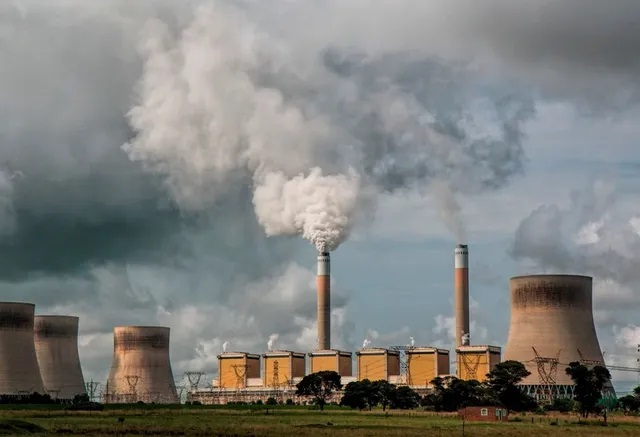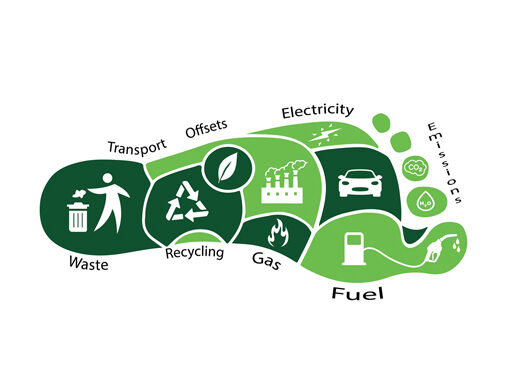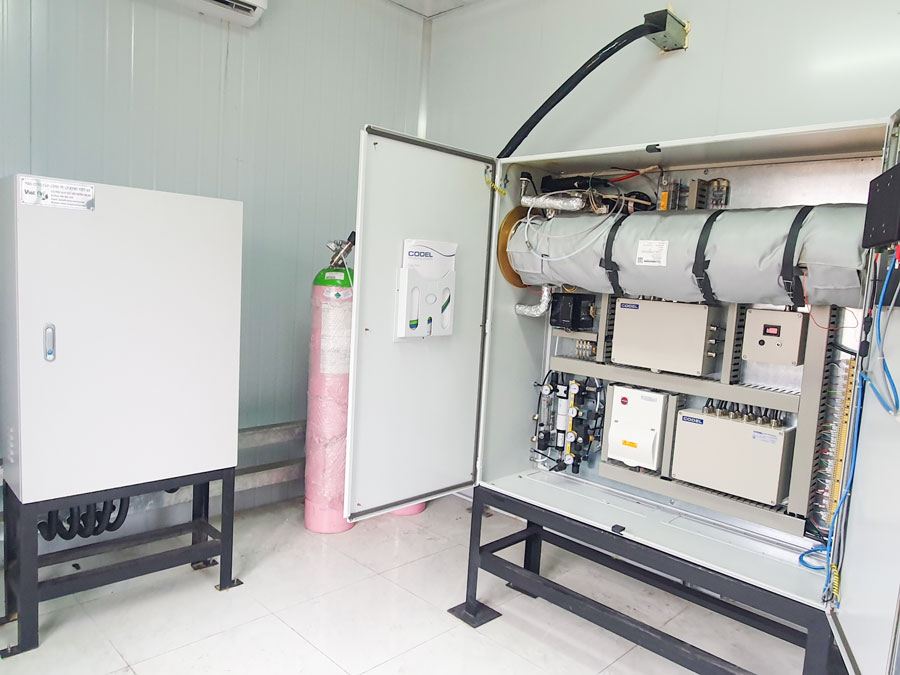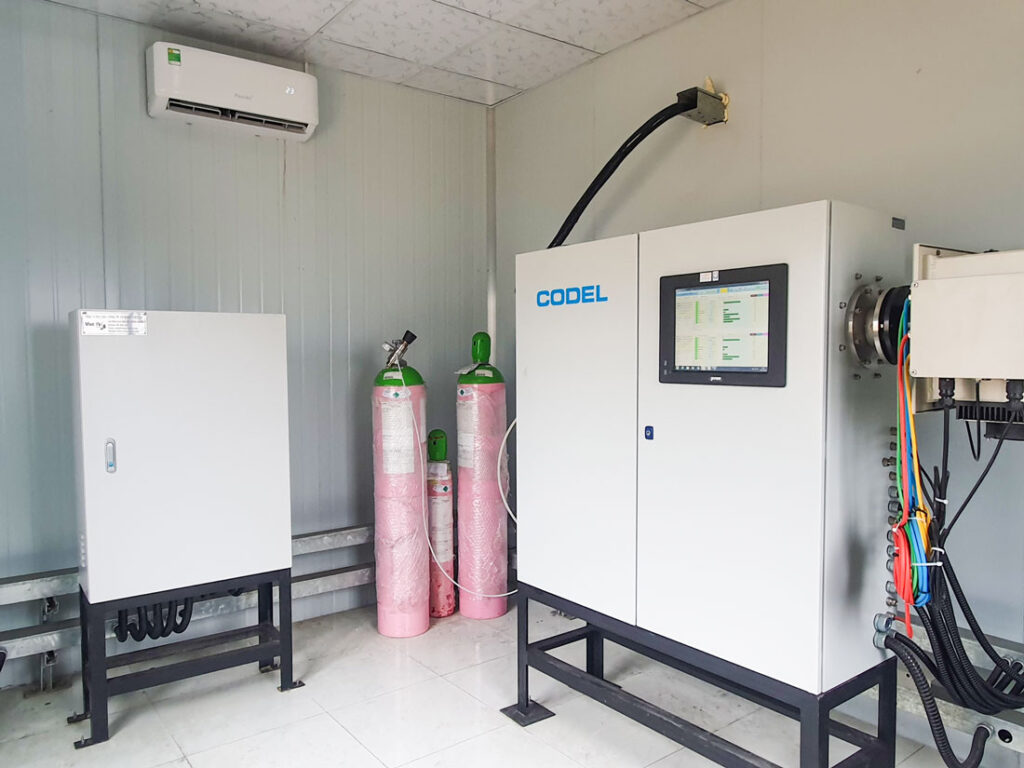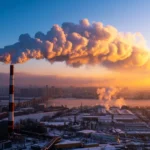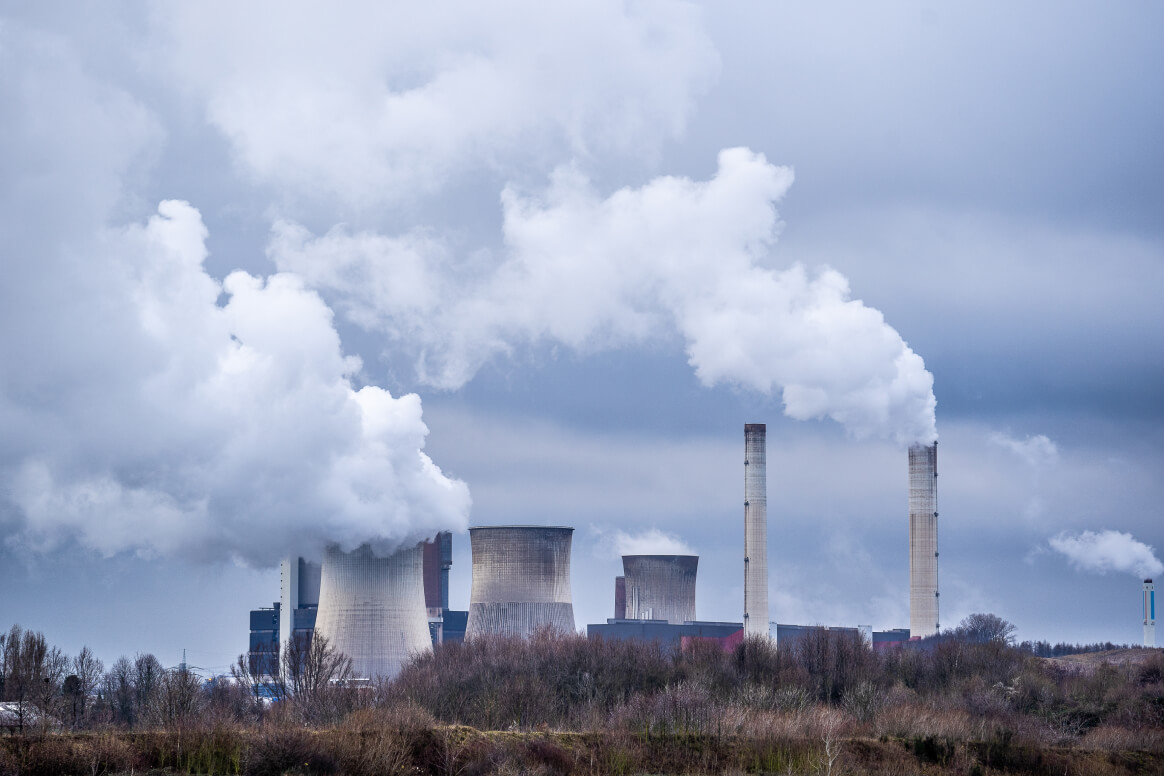
Common Terminologies
At COP28, Vietnam made strong commitments to reduce greenhouse gas emissions, develop renewable energy, and respond to climate change. To understand this trend better, let's explore some related terms:
Read more: Vietnam's Commitment at COP28
1/ Greenhouse gas emissions – GHG: Gases in Earth's atmosphere that absorb infrared radiation, trapping heat and contributing to global warming. Key greenhouse gases include carbon dioxide (CO2), methane (CH4), nitrous oxide (N2O), chlorofluorocarbons (CFCs), and perfluorocarbons (PFCs).
2/ Emission Reduction: Emission reduction involves efforts to decrease the amount of greenhouse gases released into the environment.
3/ Carbon neutrality: Carbon neutrality is the state in which the carbon emissions of an individual, organization, or country are balanced by an equivalent amount of carbon removal from the atmosphere. This can be achieved through emission reduction measures and/or carbon offsetting.
4/ Carbon offsetting: Carbon offsetting involves funding projects that remove carbon emissions from the atmosphere to compensate for the carbon emissions produced by an individual or organization. Common carbon offsetting projects include reforestation, investing in renewable energy, and carbon capture and storage.
5/ Carbon market: The carbon market is a platform for buying and selling carbon emission permits. These permits allow a company or organization to emit a certain amount of greenhouse gases. The purpose of the carbon market is to encourage emission reduction by making emissions more costly.
6/ Carbon footprint: The carbon footprint is the total amount of greenhouse gases emitted by an individual, organization, or country over a specified period. It is usually measured in tons of CO2 equivalent.
7/ Carbon emission intensity: Carbon emission intensity is the amount of greenhouse gases emitted per unit of economic output or energy. It is often measured in tons of CO2 per ton of product or per kilowatt-hour.
8/ Net emissions Net emissions refer to the total greenhouse gases emitted minus the amount removed from the atmosphere. Negative net emissions mean that an individual, organization, or country is removing more greenhouse gases than it produces.
9/ Climate science: Climate science is the study of climate change and its impacts on Earth. It includes research on greenhouse gases, Earth's climate systems, and the effects of climate change on ecosystems and societies.
10/ Climate policy: Climate policy encompasses actions taken by governments and other organizations to address climate change. Climate policies can include regulations on greenhouse gas emissions, subsidies for renewable energy, and educational campaigns to raise awareness about climate change.
Challenges in Carbon Management in Manufacturing for Reducing Greenhouse Gas Emissions
EPA Environmental Protection Agency, one of the largest contributors to carbon emissions is the manufacturing sector due to its energy-intensive processes, accounting for nearly one-quarter (23%) of direct carbon emissions.
Carbon management begins with carbon calculation, as the familiar saying goes, "You can't manage what you can't measure." However, one of the most common issues in carbon management is accurately and comprehensively calculating emissions. While industries and manufacturing activities significantly contribute to economic growth, accounting for 16% of global GDP, they also pose environmental risks that need to be addressed.
Manufacturing enterprises typically operate numerous factories spread across the globe. The emissions data they provide may not always be 100% accurate, posing challenges in gathering the necessary information to assess emissions across all of a company's plants. If any manufacturing activities are outsourced, collecting the necessary data to calculate emissions becomes even more complicated, as different products may be produced for various customers at the same facility. The consequences of poor emission calculations are substantial.
Effective Methods to Reduce Carbon Emissions
Three effective methods for reducing greenhouse gas (GHG) emissions in the manufacturing sector include: Energy Efficiency and Optimization, Sustainable Materials and Procurement, and Applying Circular Economy Principles. Each approach offers a pathway to significantly reduce carbon emissions, contributing to global efforts against climate change.
Energy Efficiency and Optimization
Improving energy efficiency in manufacturing processes is one of the most direct methods to cut carbon emissions. This can be achieved by upgrading to more energy-efficient machinery, implementing smart systems for better energy management, and optimizing production workflows to minimize waste and reduce energy consumption. Such initiatives help reduce the carbon footprint and lead to significant cost savings over time, creating a win-win situation for manufacturers and the environment.
Traphaco High-Tech Joint Stock Company operates its boiler system 24/7 using sawdust pellets instead of coal. By conducting an inventory, they identified that this activity was their largest source of GHG emissions, approximately 6,000 tons, which provided a crucial basis for technological innovation to comply with new emission regulations.
“According to our data and statistics from leading experts, we have reduced carbon emissions by 10% compared to using coal,” said Nguyen Duy Ky, Deputy Director of Traphaco High-Tech Joint Stock Company.
Sustainable Materials and Procurement
By incorporating sustainable materials into their manufacturing processes, chemical companies can reduce their carbon emissions. This may involve using biodegradable and non-toxic materials, as well as integrating recycled resources into production. Furthermore, sustainable materials can help minimize carbon emissions by reducing the demand for raw materials and new waste. In recent years, the trend of using sustainable materials in chemical production has been increasing as companies recognize the importance of reducing their dcarbon footprint and the potential economic benefits of implementing sustainable practices.
Applying Circular Economy Principles
Finally, applying the principles of a circular economy can profoundly transform manufacturing towards sustainability. Chemical manufacturers can use circular economy models to reduce waste and maximize resource use. This strategy can include reusing materials and products, recycling waste, and recovering energy from waste. By adopting circular economy concepts, chemical companies can reduce their carbon impact.
Hoa Phat employs blast furnace technology, with products manufactured on the most modern closed-loop production line, ensuring strict quality control from the raw material stage. By completely reusing the energy emitted during production, Hòa Phát not only contributes to environmental protection but also creates a significant competitive advantage for each product produced.
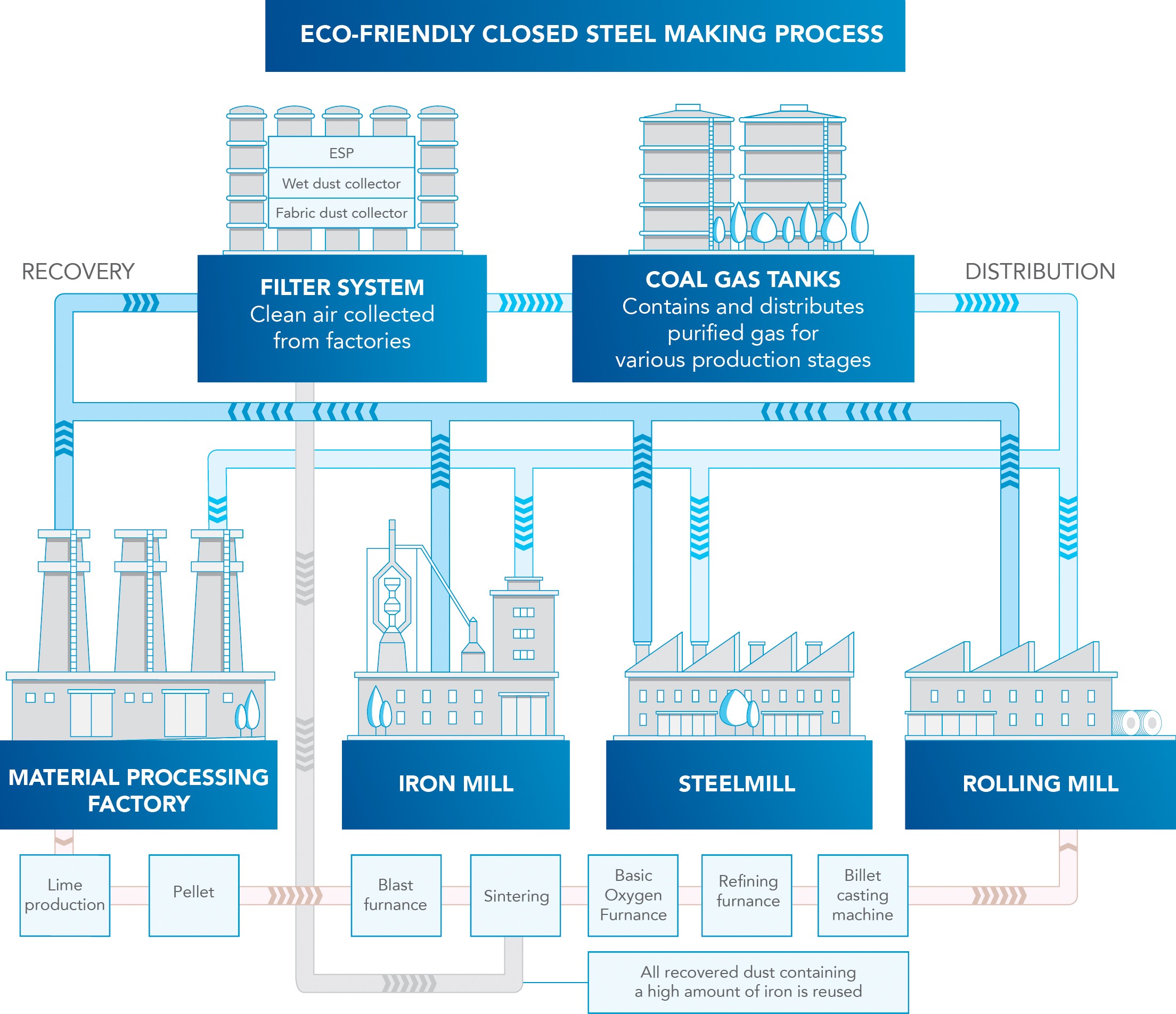
Hoa Phat environmentally friendly closed steel production process applies advanced technologies to minimize environmental pollution. Specific measures include:
- Dust Collection and Treatment System: Dust generated during production is collected using a dust extraction system and treated with electrostatic precipitators, wet scrubbers, and fabric filters.
- Wastewater Treatment System: Industrial wastewater is treated through sedimentation and biological systems before being discharged into the environment.
- Exhaust Gas Recycling System: Emissions from furnaces are collected and treated to remove harmful substances before being released into the environment.
By implementing these advanced environmental protection measures, Hòa Phát's closed steel production process significantly reduces its negative impact on the environment.
In addition, the air quality monitoring system at của Hoa Phat Dung Quat utilizes iLotusland software to monitor environmental parameters, including carbon. The iLotusland software allows for:
- Monitor detailed parameters of waste sources.
- Automatic alerts, help detect and alert abnormalities and promptly handle incidents.
- Reporting is carried out regularly as committed and required by state management agencies with periodic reporting functionality.
- Environmental monitoring signals are observed online and transmitted to the local Department of Natural Resources and Environment in full compliance with the regulations using FTP protocol as per Circular 10/2021/TT-BTNMT.
Thanks to the air quality monitoring system powered by iLotusland software, Hòa Phát Dung Quất has achieved positive results in environmental protection. Air quality in the plant area and nearby residential areas has significantly improved.
“iLotusland is an IoT technology solution for environmental monitoring, providing real-time data-based environmental monitoring solutions to enable better decision-making. The software monitors various environmental parameters across wastewater, surface water, groundwater, drinking water, CEMS, AAQMS, etc., helping government agencies, industrial zones, and factories make timely decisions in the event of environmental incidents.“
Contact us for a consultation on environmental monitoring data management and monitoring solutions!
Conclusion
Manufacturing plants play a crucial role in reducing global greenhouse gas emissions and combating climate change. Implementing sustainable and eco-friendly methods is both an ethical responsibility and a smart business decision in the current context of climate change. Businesses can significantly reduce their carbon emissions by setting goals aimed at sustainable development.
According to regulations, in the near future, each enterprise will be restricted to emitting no more than a specified amount. Thus, reducing greenhouse gas emissions, transitioning to green and renewable energy sources, and absorbing greenhouse gases in business operations will not only be a trend but also a mandatory requirement for businesses in the coming period.
—————————————–
For environmental monitoring solutions, contact iLotusLand:
𝗘𝗺𝗮𝗶𝗹: info@ilotusland.com
𝗛𝗼𝘁𝗹𝗶𝗻𝗲: +84 909 403 778
𝗪𝗲𝗯𝘀𝗶𝘁𝗲: www.ilotusland.com
